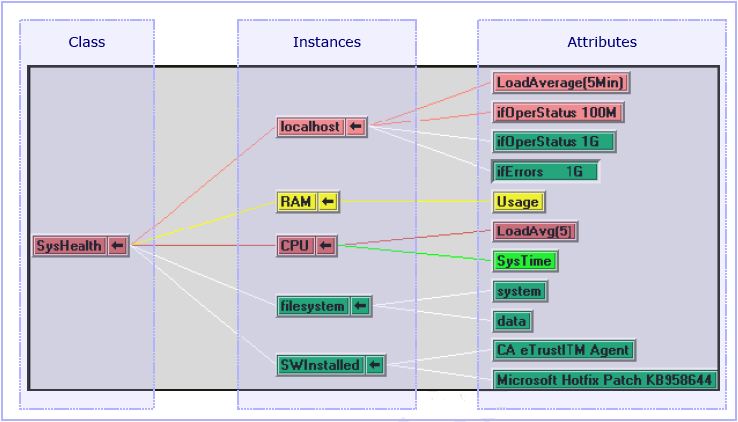

The SystemEDGE agent supports a state management model for self monitors and for process monitors fully integrated with the overall CA Virtual Assurance Management Model. The agent aggregates multiple monitors of different severities into a single Managed Object, which has a state corresponding to the monitor with the worst severity. The following illustration shows the flexibility and capabilities provided that this new mechanism provides:

The Attributes pane in the illustration, contains several monitored objects (such as SysHealth.localhost.LoadAverage). The states that the SystemEDGE agent can assign to an object are compliant with CIM ManagedSystemElement Management states. The state of each attribute object is defined by the corresponding SystemEDGE monitor. For example, if you assign LoadAverage threshold of 250 with a fatal severity and the current LoadAverage value is 250, the state of the monitored object is fatal.
The flexible object model of SystemEDGE enables you to group disparate objects from different sources. The state of the objects is aggregated across each group. For example, the agent can aggregate the health state of the server's CPU with the response time taken to access a Web page (gathered by the SRM AIM) with the performance of a disk (gathered by the Remote Monitoring AIM).
The Class pane in the illustration shows, how the state management model groups the managed objects into aggregate managed objects. Here, as illustrated, SysHealth object aggregates the state of all objects managed by it.
You can configure the state management functionality from the Self Monitor and Process Monitor tables of the Systems Management Empire MIB, in which columns containing object and severity information guide the calculation and propagation of object status for each monitor entry.
|
Copyright © 2013 CA.
All rights reserved.
|
|